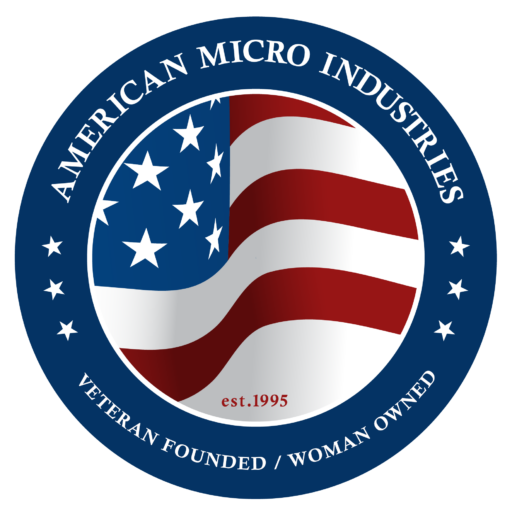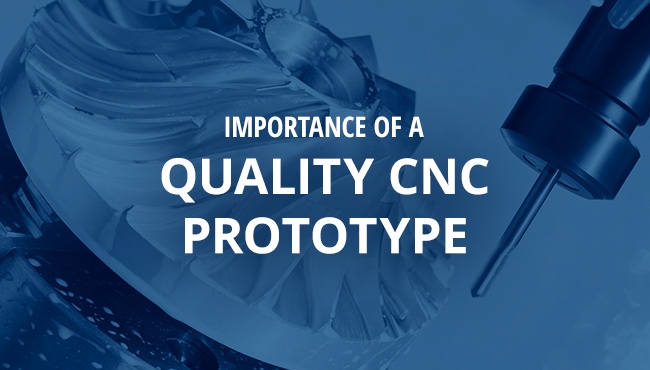


Manufacturing, regardless of the industry and product, requires precision, speed and efficiency. Computer numerical control (CNC) prototyping and machining give your business that power. Instead of spending the time and resources to draw what you need and then create a physical version, CNC prototyping makes this process digital using computer-assisted design or GibbsCAM software. Once you have the digital prototype, CNC machining uses precise computer coding, instead of manual control, to execute the manufacturing process. Mass-produced products that quickly and accurately meet your business’ exact specifications are the result.
Whatever product you need to mass-produce out of whatever material you need, CNC prototyping and machining make the process easier. Learn more to determine if your business needs a CNC prototype and how this decision can help support your operations.
The benefits of prototyping are evident. But, you may be wondering, “Do I need a professionally done prototype?” If you are making a product that needs to meet stringent specifications, accuracy is essential. The purpose of a prototype is to create an early-stage visualization of your product. But, this is not a rough model. A CNC prototype gets every detail right, powered by a computer’s precise abilities. If your business plans to manufacture products with highly specific requirements and little margin for human error, CNC prototyping is an attractive option. The fast turnaround time of this approach to prototyping can also save time and money.
There are other prototyping options, such as 3D printing, but CNC prototyping can involve a broader range of materials. This approach is also more appropriate for intricate and mechanical products. CNC prototype machining techniques include CNC milling, CNC turning or CNC screw matching. Each approach uses computer-controlled equipment to create highly accurate and detailed prototypes.
Consider what type of product you are making and determine whether a CNC prototype fits your business needs. If you need a product with made-to-order parts, CNC prototyping can help you test your design while keeping your project on time and on budget.
The market for rapid prototyping is rapidly growing, with an estimated value of $309.9 million in 2020. Why are so many people turning to this option? Why is a working prototype useful? A quality CNC prototype will have the following qualities.
You might have a distinct mental image of your offering, but that is not enough. You need to know how it will work in reality. CNC prototyping will provide a functional model of the product you are planning to make. The prototype will be the exact size and specifications of the product you plan to deliver to your customers. The model will help you assess whether the product works and if you need to make improvements.
CNC prototyping can help you address the expected design challenges, and it can also uncover unexpected hurdles. Armed with this information, you can refine your design, polishing your prototype until you have the model of the exact product that you want to manufacture at scale. When planning for real and future products, you will have more information to help plan your company’s future.
When you introduce a new product to the market, you want it to meet your customers’ needs. A quality CNC prototype helps you get your potential customers’ feedback before a full-scale product launch. You will have a functional prototype for beta testing. During test cases, you can analyze your potential customers’ needs and how well the product delivers. You can test a wide variety of customer scenarios and uncover any potential product challenges or flaws. You can solve any issues the initial product development team may have missed during the initial design phase and improve the product before going to market.
CNC prototyping is an affordable option that will allow you to gather vital customer opinions through testing. The cost of receiving feedback early in the design process is more cost-effective than adjusting to meet customers’ needs and wants on a product that is already widely available.
CNC prototyping also allows you to go beyond use cases that demonstrate hypothetical customer feedback. You can also take your prototype directly to your clients. They can tell you what features do and do not suit them. While this may mean more work and upfront design changes, it can lead to more successful sales down the line. When you know exactly what your client is after, you can deliver. Prototyping also offers clients an option to see how a product works before committing to full-scale production. Clients concerned about expenses without knowing the product’s real-world functionality could feel more at ease after seeing an accurate CNC prototype.
A prototype’s aim is to help you understand how your product will work before you mass-produce and go to market. Quality CNC prototyping allows you to see how your product works and to determine how much it will cost to manufacture on a large scale. Knowing this information helps businesses plan for the future. Does the product work as customers need? Will you need to adjust the budget in light of expected manufacturing costs? A prototype takes the guesswork out of manufacturing and empowers your team with the necessary knowledge to plan for the future. Looking ahead helps keep your company prepared.
The speed and ease of CNC prototyping are major benefits. Your prototyping partner will digitally create and refine the design. There is no hand drawing or human error to contend with at this stage in the process. Next, the digital design goes to a CNC machine, which is coded to efficiently and accurately create the physical prototype. Again, the lack of human involvement eliminates errors and increases speed. With such a straightforward process, you have more time in the development process to tweak your product. If you need to create an entirely new prototype, you don’t need to worry about completely changing your timeline or your budget for the project. This efficiency, coupled with affordability, makes CNC prototyping a win for your business.
A product’s design can and will change, sometimes substantially, from the initial concept to manufacturing. With an accurate representation of your product’s design, you will gain valuable insight into how that design works in practice. Your prototype may demonstrate that your design is ready for production. Or, it may show you need to adjust specific design aspects to improve the product’s function, durability or cost.
Changing your design doesn’t have to mean starting from scratch. You may merely be making small design tweaks that will ultimately impact the final product’s quality. Early adjustments like this save your business money and help you create the highest-quality product possible, which ultimately means better customer service and reputation. You may even find unexpected ways to explore product innovation as you adjust your product design.
Complete confidence in your product is essential for the users, your bottom line and your reputation, which means quality assurance is a pivotal part of designing and manufacturing any product. Even if you are sure your product design is solid, you will need to validate it. Quality assurance helps businesses understand their users’ experience, potential design flaws and product durability. A quality CNC prototype can test all these areas.
Does the product fulfill the desired function? Is it easy for the customer to use? Do all its features work as intended? Could your team refine parts of the product design to improve its functionality and durability? Quality assurance helps answer those questions, validating your design. It also provides essential documentation of your design process. Your company needs a quality assurance system, and your prototype can play a vital role.
How much will it cost to make your product? Knowing the real-world production cost helps a business prepare its budget and understand the potential profits. The cost of production includes fixed and variable costs. Your prototype can give you a definitive picture of how these costs will play out on a larger scale. You can estimate your material costs, labor costs, resource allocation and the amount of time it will take to manufacture your product for the market. Understanding your costs empowers your business to make smart financial decisions. Can you change something about the product design, such as the material, to save money while maintaining the same quality? Exploring these questions early on in the process of bringing a product to market can significantly impact your company’s bottom line.
CNC prototyping gives your business the opportunity to find cost savings. Most importantly, discovering design flaws before production saves a company from the costly mistake of mass-producing a product that is ineffective or even dangerous to use. However, there are other potential ways to save. You can tweak your design approach and even your materials in the prototype phase, testing different approaches to determine the most cost-effective blueprint for your final product. CNC prototyping can also expedite your time from design to production, ultimately creating measurable cost savings.
Product longevity is a critical factor to consider. How does your product hold up to stress? Is it durable? Will it serve its intended purpose without breaking? With your CNC prototype, you can explore your product’s technical specifications. CNC prototyping allows you to use the actual material you plan to make your final products with. You can also create the prototype with the level of detail accurate to the final product. With this in hand, you can test how the product will work in real-life scenarios. Will any structural integrity issues affect its function and durability? Knowing the answer to this question is essential to refining your product design and ultimately manufacturing something that will last. You and your customers want a durable, sturdy product.
Failure in business is inevitable. People and processes are imperfect. Successful businesses learn from their mistakes, using failure to improve and move forward. While failure may be unavoidable, you can try to plan for it. Prototyping has built-in space for failure. You can play with the design, testing different approaches to determine what works and what doesn’t. Failing at the design stage of product development saves significant time and money compared to later-stage failures. Once you discover what isn’t working, you can return to the digital drawing board. Make the necessary adjustments. Then, use the new, improved specifications to create a CNC prototype for further testing. You will be able to cost-effectively eliminate design flaws before taking your product to the manufacturing stage.
When your business has created a new product, it is essential to protect that intellectual property. Patents provide legal protection for unique inventions. You do not necessarily need a prototype to file a patent for your product, but it can be extremely helpful. You can file for three different kinds of patents, including utility, design and plant. If you are planning to file for a utility or design patent, you need a visual representation of the product. A CNC prototype serves this purpose. It is a completely accurate representation of the product you ultimately want to sell, including the intricate details. If you want legal protection for your product, a quality CNC prototype can help. Once you hold the patent, other businesses will not be able to monetize the product design you have spent so much time and money creating.
Now that you understand CNC prototype importance, American Micro Industries is here to help. We serve a wide variety of industries, including transportation, aerospace, military and defense, medical and more. Whether you are planning to manufacture a product from plastics, phenolics or foam, our CNC prototyping can help you test your product and enable you to realize your ideal product design. Learn more about our CNC machining services, our prototype machining and how we can get you the CNC prototype your business needs.